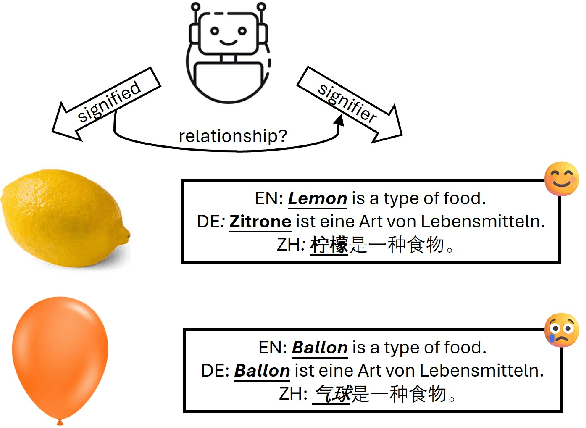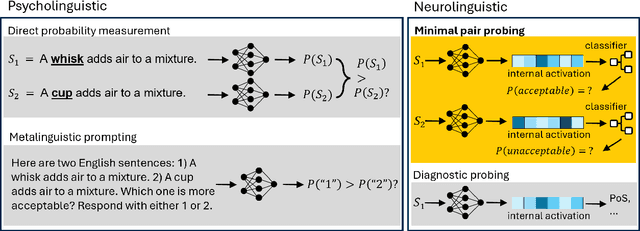Nima Mesgarani
MeanFlow-TSE: One-Step Generative Target Speaker Extraction with Mean Flow
Dec 21, 2025Abstract:Target speaker extraction (TSE) aims to isolate a desired speaker's voice from a multi-speaker mixture using auxiliary information such as a reference utterance. Although recent advances in diffusion and flow-matching models have improved TSE performance, these methods typically require multi-step sampling, which limits their practicality in low-latency settings. In this work, we propose MeanFlow-TSE, a one-step generative TSE framework trained with mean-flow objectives, enabling fast and high-quality generation without iterative refinement. Building on the AD-FlowTSE paradigm, our method defines a flow between the background and target source that is governed by the mixing ratio (MR). Experiments on the Libri2Mix corpus show that our approach outperforms existing diffusion- and flow-matching-based TSE models in separation quality and perceptual metrics while requiring only a single inference step. These results demonstrate that mean-flow-guided one-step generation offers an effective and efficient alternative for real-time target speaker extraction. Code is available at https://github.com/rikishimizu/MeanFlow-TSE.
Far from the Shallow: Brain-Predictive Reasoning Embedding through Residual Disentanglement
Oct 26, 2025Abstract:Understanding how the human brain progresses from processing simple linguistic inputs to performing high-level reasoning is a fundamental challenge in neuroscience. While modern large language models (LLMs) are increasingly used to model neural responses to language, their internal representations are highly "entangled," mixing information about lexicon, syntax, meaning, and reasoning. This entanglement biases conventional brain encoding analyses toward linguistically shallow features (e.g., lexicon and syntax), making it difficult to isolate the neural substrates of cognitively deeper processes. Here, we introduce a residual disentanglement method that computationally isolates these components. By first probing an LM to identify feature-specific layers, our method iteratively regresses out lower-level representations to produce four nearly orthogonal embeddings for lexicon, syntax, meaning, and, critically, reasoning. We used these disentangled embeddings to model intracranial (ECoG) brain recordings from neurosurgical patients listening to natural speech. We show that: 1) This isolated reasoning embedding exhibits unique predictive power, accounting for variance in neural activity not explained by other linguistic features and even extending to the recruitment of visual regions beyond classical language areas. 2) The neural signature for reasoning is temporally distinct, peaking later (~350-400ms) than signals related to lexicon, syntax, and meaning, consistent with its position atop a processing hierarchy. 3) Standard, non-disentangled LLM embeddings can be misleading, as their predictive success is primarily attributable to linguistically shallow features, masking the more subtle contributions of deeper cognitive processing.
SightSound-R1: Cross-Modal Reasoning Distillation from Vision to Audio Language Models
Sep 19, 2025Abstract:While large audio-language models (LALMs) have demonstrated state-of-the-art audio understanding, their reasoning capability in complex soundscapes still falls behind large vision-language models (LVLMs). Compared to the visual domain, one bottleneck is the lack of large-scale chain-of-thought audio data to teach LALM stepwise reasoning. To circumvent this data and modality gap, we present SightSound-R1, a cross-modal distillation framework that transfers advanced reasoning from a stronger LVLM teacher to a weaker LALM student on the same audio-visual question answering (AVQA) dataset. SightSound-R1 consists of three core steps: (i) test-time scaling to generate audio-focused chains of thought (CoT) from an LVLM teacher, (ii) audio-grounded validation to filter hallucinations, and (iii) a distillation pipeline with supervised fine-tuning (SFT) followed by Group Relative Policy Optimization (GRPO) for the LALM student. Results show that SightSound-R1 improves LALM reasoning performance both in the in-domain AVQA test set as well as in unseen auditory scenes and questions, outperforming both pretrained and label-only distilled baselines. Thus, we conclude that vision reasoning can be effectively transferred to audio models and scaled with abundant audio-visual data.
Layer-wise Minimal Pair Probing Reveals Contextual Grammatical-Conceptual Hierarchy in Speech Representations
Sep 19, 2025Abstract:Transformer-based speech language models (SLMs) have significantly improved neural speech recognition and understanding. While existing research has examined how well SLMs encode shallow acoustic and phonetic features, the extent to which SLMs encode nuanced syntactic and conceptual features remains unclear. By drawing parallels with linguistic competence assessments for large language models, this study is the first to systematically evaluate the presence of contextual syntactic and semantic features across SLMs for self-supervised learning (S3M), automatic speech recognition (ASR), speech compression (codec), and as the encoder for auditory large language models (AudioLLMs). Through minimal pair designs and diagnostic feature analysis across 71 tasks spanning diverse linguistic levels, our layer-wise and time-resolved analysis uncovers that 1) all speech encode grammatical features more robustly than conceptual ones.
ZeroSep: Separate Anything in Audio with Zero Training
May 29, 2025Abstract:Audio source separation is fundamental for machines to understand complex acoustic environments and underpins numerous audio applications. Current supervised deep learning approaches, while powerful, are limited by the need for extensive, task-specific labeled data and struggle to generalize to the immense variability and open-set nature of real-world acoustic scenes. Inspired by the success of generative foundation models, we investigate whether pre-trained text-guided audio diffusion models can overcome these limitations. We make a surprising discovery: zero-shot source separation can be achieved purely through a pre-trained text-guided audio diffusion model under the right configuration. Our method, named ZeroSep, works by inverting the mixed audio into the diffusion model's latent space and then using text conditioning to guide the denoising process to recover individual sources. Without any task-specific training or fine-tuning, ZeroSep repurposes the generative diffusion model for a discriminative separation task and inherently supports open-set scenarios through its rich textual priors. ZeroSep is compatible with a variety of pre-trained text-guided audio diffusion backbones and delivers strong separation performance on multiple separation benchmarks, surpassing even supervised methods.
Bridging Ears and Eyes: Analyzing Audio and Visual Large Language Models to Humans in Visible Sound Recognition and Reducing Their Sensory Gap via Cross-Modal Distillation
May 11, 2025Abstract:Audio large language models (LLMs) are considered experts at recognizing sound objects, yet their performance relative to LLMs in other sensory modalities, such as visual or audio-visual LLMs, and to humans using their ears, eyes, or both remains unexplored. To investigate this, we systematically evaluate audio, visual, and audio-visual LLMs, specifically Qwen2-Audio, Qwen2-VL, and Qwen2.5-Omni, against humans in recognizing sound objects of different classes from audio-only, silent video, or sounded video inputs. We uncover a performance gap between Qwen2-Audio and Qwen2-VL that parallels the sensory discrepancy between human ears and eyes. To reduce this gap, we introduce a cross-modal distillation framework, where an LLM in one modality serves as the teacher and another as the student, with knowledge transfer in sound classes predicted as more challenging to the student by a heuristic model. Distillation in both directions, from Qwen2-VL to Qwen2-Audio and vice versa, leads to notable improvements, particularly in challenging classes. This work highlights the sensory gap in LLMs from a human-aligned perspective and proposes a principled approach to enhancing modality-specific perception in multimodal LLMs.
XCOMPS: A Multilingual Benchmark of Conceptual Minimal Pairs
Feb 27, 2025



Abstract:We introduce XCOMPS in this work, a multilingual conceptual minimal pair dataset covering 17 languages. Using this dataset, we evaluate LLMs' multilingual conceptual understanding through metalinguistic prompting, direct probability measurement, and neurolinguistic probing. By comparing base, instruction-tuned, and knowledge-distilled models, we find that: 1) LLMs exhibit weaker conceptual understanding for low-resource languages, and accuracy varies across languages despite being tested on the same concept sets. 2) LLMs excel at distinguishing concept-property pairs that are visibly different but exhibit a marked performance drop when negative pairs share subtle semantic similarities. 3) Instruction tuning improves performance in concept understanding but does not enhance internal competence; knowledge distillation can enhance internal competence in conceptual understanding for low-resource languages with limited gains in explicit task performance. 4) More morphologically complex languages yield lower concept understanding scores and require deeper layers for conceptual reasoning.
AAD-LLM: Neural Attention-Driven Auditory Scene Understanding
Feb 24, 2025



Abstract:Auditory foundation models, including auditory large language models (LLMs), process all sound inputs equally, independent of listener perception. However, human auditory perception is inherently selective: listeners focus on specific speakers while ignoring others in complex auditory scenes. Existing models do not incorporate this selectivity, limiting their ability to generate perception-aligned responses. To address this, we introduce Intention-Informed Auditory Scene Understanding (II-ASU) and present Auditory Attention-Driven LLM (AAD-LLM), a prototype system that integrates brain signals to infer listener attention. AAD-LLM extends an auditory LLM by incorporating intracranial electroencephalography (iEEG) recordings to decode which speaker a listener is attending to and refine responses accordingly. The model first predicts the attended speaker from neural activity, then conditions response generation on this inferred attentional state. We evaluate AAD-LLM on speaker description, speech transcription and extraction, and question answering in multitalker scenarios, with both objective and subjective ratings showing improved alignment with listener intention. By taking a first step toward intention-aware auditory AI, this work explores a new paradigm where listener perception informs machine listening, paving the way for future listener-centered auditory systems. Demo and code available: https://aad-llm.github.io.
Exploring Finetuned Audio-LLM on Heart Murmur Features
Jan 23, 2025



Abstract:Large language models (LLMs) for audio have excelled in recognizing and analyzing human speech, music, and environmental sounds. However, their potential for understanding other types of sounds, particularly biomedical sounds, remains largely underexplored despite significant scientific interest. In this study, we focus on diagnosing cardiovascular diseases using phonocardiograms, i.e., heart sounds. Most existing deep neural network (DNN) paradigms are restricted to heart murmur classification (healthy vs unhealthy) and do not predict other acoustic features of the murmur such as timing, grading, harshness, pitch, and quality, which are important in helping physicians diagnose the underlying heart conditions. We propose to finetune an audio LLM, Qwen2-Audio, on the PhysioNet CirCor DigiScope phonocardiogram (PCG) dataset and evaluate its performance in classifying 11 expert-labeled murmur features. Additionally, we aim to achieve more noise-robust and generalizable system by exploring a preprocessing segmentation algorithm using an audio representation model, SSAMBA. Our results indicate that the LLM-based model outperforms state-of-the-art methods in 8 of the 11 features and performs comparably in the remaining 3. Moreover, the LLM successfully classifies long-tail murmur features with limited training data, a task that all previous methods have failed to classify. These findings underscore the potential of audio LLMs as assistants to human cardiologists in enhancing heart disease diagnosis.
Large Language Models as Neurolinguistic Subjects: Identifying Internal Representations for Form and Meaning
Nov 12, 2024



Abstract:This study investigates the linguistic understanding of Large Language Models (LLMs) regarding signifier (form) and signified (meaning) by distinguishing two LLM evaluation paradigms: psycholinguistic and neurolinguistic. Traditional psycholinguistic evaluations often reflect statistical biases that may misrepresent LLMs' true linguistic capabilities. We introduce a neurolinguistic approach, utilizing a novel method that combines minimal pair and diagnostic probing to analyze activation patterns across model layers. This method allows for a detailed examination of how LLMs represent form and meaning, and whether these representations are consistent across languages. Our contributions are three-fold: (1) We compare neurolinguistic and psycholinguistic methods, revealing distinct patterns in LLM assessment; (2) We demonstrate that LLMs exhibit higher competence in form compared to meaning, with the latter largely correlated to the former; (3) We present new conceptual minimal pair datasets for Chinese (COMPS-ZH) and German (COMPS-DE), complementing existing English datasets.
 Add to Chrome
Add to Chrome Add to Firefox
Add to Firefox Add to Edge
Add to Edge